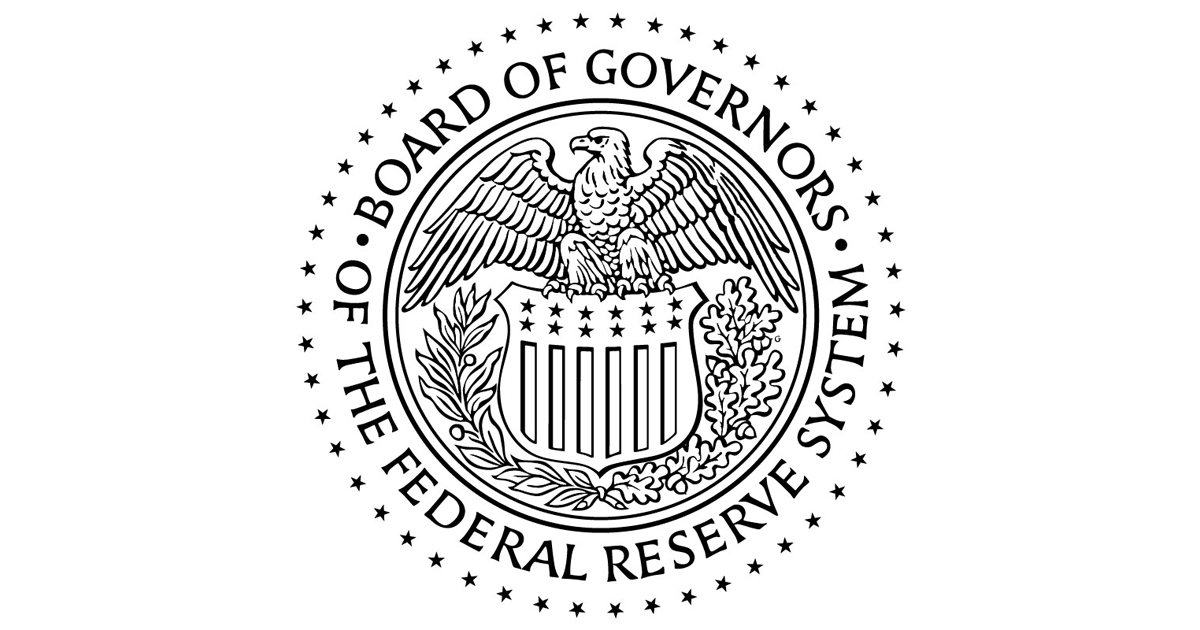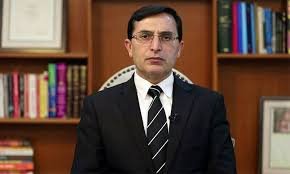LOS ANGELES — LOS ANGELES (AP) — When rapper-actor Common was a kid, he carried towels and sneakers as a Chicago Bulls ball boy who was close enough to hear the squeak of shoes and the roar inside the arena.
Decades later, Common is helping set…

LOS ANGELES — LOS ANGELES (AP) — When rapper-actor Common was a kid, he carried towels and sneakers as a Chicago Bulls ball boy who was close enough to hear the squeak of shoes and the roar inside the arena.
Decades later, Common is helping set…
The Public Company Accounting Oversight Board (PCAOB) announced today that PCAOB Board Member Kara M. Stein will host an in-person forum on auditing in the small business environment and on auditing broker-dealers on November 12, 2025. The one-day event – part of a series of 2025 forums – will take place at Loyola Marymount University (St. Robert’s Hall, 1 LMU Drive, Los Angeles, CA, 90045).
“Auditors of smaller public companies and of broker-dealers make up essential parts of the auditing landscape and our investor-protection framework,” said Board Member Stein. “The PCAOB is dedicated to engaging with our stakeholders in support of vibrant capital markets, and I look forward to continuing this dialogue in Los Angeles.”
Tailored to PCAOB-registered firms auditing smaller public companies or broker-dealers, the forums provide a unique opportunity for auditors to interact with representatives from the PCAOB and other regulators.
In addition to remarks from Board Member Stein, the agenda includes the following:
There is no fee to attend the Los Angeles forum, but advance registration is required and can be completed here. While the event is in-person only, a recording of the event will be made available on the PCAOB’s website. Attendees can earn continuing professional education (CPE) credits.
Forum attendees are encouraged to submit questions in advance via email. There also will be an opportunity to submit questions during the forum.
Visit the PCAOB’s Information for Smaller Firms page – which the PCAOB maintains as part of its ongoing efforts to support smaller audit firms – to find resources including publications, videos, and a sign-up form for the Communications to Small Audit Firm Practitioners mailing list.
*****
The PCAOB is a nonprofit corporation established by Congress to oversee the audits of public companies in order to protect investors and further the public interest in the preparation of informative, accurate, and independent audit reports. The PCAOB also oversees the audits of brokers and dealers registered with the Securities and Exchange Commission, including compliance reports filed pursuant to federal securities laws.

Rugby shirts and cable knit sweaters may be trending, thanks to Jonathan Anderson’s debut menswear collection for Dior, but at Begg x Co they’ve always been in fashion.
In her first full collection as creative director…

Rare hereditary diseases can be identified in patients and specific mutations in tumour cells detected – DNA sequencing revolutionised biomedical research decades ago. In recent years, new sequencing methods (next-generation sequencing) in…

A free Steam demo is now available for Heroes of Might and Magic: Olden Era, as announced during the Heroes of Might and Magic 30th Anniversary Celebration. The demo features four playable factions, including the new Schism faction, as well as a…
Google has announced a free one-year subscription to its Google AI Pro plan for students in Pakistan who are 18 years or older.
The initiative aims to assist students in enhancing their learning, research, and creativity by providing access to advanced AI tools at no cost.
With the Gemini AI Pro Plan, eligible students can explore Google’s most powerful AI features, including the Gemini 2.5 Pro model, Gemini integration in Google Apps, and NotebookLM.
The Gemini 2.5 Pro model offers more in-depth features such as Deep Research, which helps with assignments, research, and creative projects. Additionally, Gemini in Google Apps integrates AI assistance into tools like Gmail, Docs, Sheets, Slides, and Meet, enabling students to summarize emails, create presentations, and analyze data more efficiently.
NotebookLM, an AI-powered research and writing tool, offers five times more Audio Overviews, Notebooks, and other features to assist students with their academic work.
The plan also includes the ability to create dynamic videos from text or photos, access higher limits for tools like Veo 3 and Flow, and enjoy 2TB of cloud storage across Google Drive, Gmail, and Photos for storing notes, projects, and academic resources securely.
This offer is part of Google’s mission to empower students globally by providing them with the tools they need to enhance their education and creativity.
The Google Gemini AI Pro Plan is available now for eligible university students across several countries in the Asia-Pacific region, including Pakistan. Students can sign up to gain free access for up to one year and begin using these advanced AI tools.

Thank you to the Economic Club of Minnesota for the opportunity to speak to you today.1 I’m happy to be here for several reasons, one of which is that I have roots in Minnesota. My grandmother was born and raised in Eveleth, where her parents ran a small clothing store they opened in 1906 to serve the growing population that came here in the iron ore mining boom of that era. That generation’s hard work and dreams of a better future helped build this great state as well as the prosperous economy that this club and the Federal Reserve are both dedicated to fostering.
We are midway between the last meeting of the Federal Open Market Committee (FOMC) and our next meeting at the end of this month. At our last meeting in September, we decided to reduce the policy rate by 25 basis points, a decision I supported. My FOMC colleagues and I also updated our projections for the economic outlook for the next couple of years and gave our assessments of the likely appropriate policy rate path as economic conditions evolve. In my remarks today, I will share my own thinking related to those decisions last month, and how incoming data and other developments have subsequently shaped my views as we head into the FOMC’s next meeting in three weeks. That includes the economic implications of various developments in Washington including the federal government shutdown, which I imagine is on the minds of many of you today.
We are currently in a challenging position, because the risks to both sides of the FOMC’s mandate—employment and inflation—are elevated. I agree with Chair Powell’s succinct view that there is no risk-free path forward for monetary policy. While inflation has come down a great deal since 2021, it is still above our 2 percent target and is now rising. And although several data points indicate that the labor market may be roughly in balance, we also know there has been a sharp drop in job creation since May, which suggests risks to the labor market going forward. The most difficult circumstances for making monetary policy decisions are when both mandate variables are at risk.
Let me start with inflation. The latest data show that 12-month headline inflation based on personal consumption expenditures (PCE) rose again in August to 2.7 percent. Core PCE inflation, which has historically been a good guide to future inflation, was 2.9 percent. After falling from its high of 7.2 percent in mid-2022 to 2.3 percent in April of this year, PCE inflation has been rising since then.
That timing is no coincidence. Research by Federal Reserve staff and others indicates that the increase in inflation since April has likely owed largely to the sharp increase in tariffs that kicked in around then. There are various measures of the overall level of tariffs. For assessing how tariffs are affecting inflation, I find it helpful to look at tariff collections relative to imports, which gives us a measure of the real effective tariff rate paid as goods come into the country. This rate has risen sharply this year, reaching about 11 percent in August, and is likely to rise further in the near term.
The tariff hikes have boosted core goods inflation, and at the same time progress on core services inflation has stalled. I expect that core PCE inflation will end the year over 3 percent.
The median FOMC participant estimates that headline PCE inflation will not return to our 2 percent target until the end of 2027, more than two years from today and six and a half years since inflation began rising in 2021. This would be the longest period of PCE inflation above 2 percent since a seven-year stretch that ended in 1993. I recognize that the economy and the American people have been hit by a series of unusual economic shocks in recent years—the COVID-19 pandemic and related shutdowns, disrupted supply chains for goods and labor shortages, higher energy costs from Russia’s war on Ukraine, and the sudden increase in tariffs this year. Even so, after the high inflation Americans have endured, two more years would be a long time to wait for a return to our target, and that possibility weighs on my judgment for appropriate monetary policy.
I am also concerned about further upside risks to inflation and inflation expectations. While the immediate effects of tariffs on inflation have been smaller than most economic forecasters had expected, the inventories built up in anticipation of the tariffs may have had a role in easing the immediate impact, as have compressed profit margins. While that is good news for inflation, the corresponding bad news is that firms will eventually run down those inventories and will only be able to compress margins for a while. Many importers, and firms affected by imports, are reporting that they are waiting as long as possible to pass on the costs from tariffs to their customers, mostly by temporarily reducing profit margins.2 Normalizing margins over time implies a gradual, but longer, upward trajectory for inflation, a pattern of price increases that I fear could convince many consumers that higher inflation is going to be more of a permanent phenomenon. This is important because expectations of future inflation affect spending decisions in the near term and can drive a cycle of escalating inflation, as we saw after prices began rising in 2021.
With that experience in mind, I am skeptical of assurances that we should fully “look through” higher inflation from import tariffs. While, in principle, tariffs are a one-time increase in prices and should not sustainably raise inflation, that may not be the case if prices keep rising month after month and affect expectations. There has been nothing “one-time” or predictable about these tariff increases, which have ratcheted upward this year on particular countries and particular sectors in a series of steps. At some point, businesses and consumers could start to make pricing, spending, and wage decisions based on their belief in higher future inflation, thereby driving a cycle of persistence. Measures of near-term inflation expectations are down from peaks in April when tariffs were announced, but they are still higher than last year.
As a result, I believe the Federal Reserve’s price stability goal faces significant risks. That said, there are some factors that mitigate these risks. In particular, the softer labor market could help keep inflation in check by making it harder for workers to bargain for higher wages even if people expect their cost of living to increase, and by making it harder for businesses to fully pass through price increases to consumers. In addition, the more gradual effect of tariffs on prices has not, to date, led to the type of supply chain dislocations that can have pronounced second-round effects on inflation. Also, longer-term inflation expectations remain well anchored.
So let’s turn to the labor market. While we do not have the full complement of labor market data because the government shutdown has delayed the Bureau of Labor Statistics’ employment report, we do know that the payroll services firm ADP found that private-sector employment shrank last month, in keeping with a slowdown in job creation since May. Part of the slowing surely reflects developments on the supply side—from both reduced net immigration and somewhat reduced labor force participation—but it is unclear exactly how much. As a result, it is challenging to gauge exactly how much labor demand has softened. Growth in labor supply has declined significantly, with perhaps as many as a million fewer people in the workforce than would have been expected based on the typical pattern of immigration that prevailed in the years prior to the pandemic. With a reduced supply of labor, what constitutes a healthy growth rate for employment would be smaller. One can see that slower labor supply growth has been an important factor in the weaker job creation, because over the period that job gains have slowed significantly, the unemployment rate has only edged up to 4.3 percent, a level typically associated with a sound labor market.
Other measures suggest that labor supply and demand remain in the same rough balance they have been in for more than a year. The ratio of job openings to the number of people looking for work is around 1, the level that has persisted since about the middle of 2024. Likewise, the rate of people losing their jobs is running at the same rate that it has for the past two and a half years, and there is no sign of an impending jump in the unemployment rate in the weekly reports of new claims for unemployment insurance. That said, even if the labor market is still roughly in balance, the fact that this balance is being achieved from simultaneous slowing in labor supply growth and in hiring suggests that the labor market is more vulnerable to negative shocks.
In addition, despite the low and relatively steady unemployment rate, household perceptions of the labor market have deteriorated and are below the level they reached in the strong labor market immediately before the pandemic. According to the New York Fed’s survey of consumers, people’s perceptions of their chance of finding a new job if they lost their current job fell sharply in August to the lowest reading since the survey started in June 2013. It rebounded somewhat in September, but remained at levels seen in 2013, when the labor market was weak. Also, components of the workforce that are usually an early indication of cyclical changes in the labor market have deteriorated. The unemployment rate for Black or African American workers, which reached a historic low in 2023, is back to its highest level since the pandemic. Unemployment rates for younger workers are also up.
One reason I take these signals seriously is that experience shows that when labor markets turn down, it can happen suddenly. With job growth near zero for the past several months, the labor market could decline precipitously if the economy is hit with another shock. Growth in gross domestic product (GDP) has slowed significantly this year; however, earlier concerns of a continued slowdown seem to be fading. After a negative reading in the first quarter, real GDP grew at a 3.8 percent rate in the second quarter—smoothing through to a rate of 1.6 percent for the first half of the year. Strong spending and other data for the third quarter indicate that GDP remained strong last quarter. While I expect that tariffs and lower labor supply have weighed on growth and will continue to do so, I do not yet see significant risks in the growth data, though I remain attuned to risks from a variety of factors. It is hard to judge at this point whether the federal government shutdown will leave a noticeable imprint on economic growth, because we don’t know how long it will last, and whether it may result in sustained changes in government spending. Based on past shutdowns, it is most likely that a shutdown would reduce GDP growth in the quarter in which it occurs and then boost growth in the subsequent quarter by the same amount.
As I said earlier, this economic outlook, and the associated uncertainties that underlie it, pose challenges for judging the correct stance of monetary policy as well as the appropriate path forward, given that the risks to achieving both components of our mandate are elevated.
With the easing in output growth and the likelihood of tariffs and labor supply weighing on the economy in the months ahead, we need to be prepared for the possibility that the softening in the labor market will become something worse, especially if there is a further adverse shock to demand.
At the same time, inflation, which made steady progress last year toward the FOMC’s 2 percent goal, has moved up in 2025, especially after the sharp increase in tariffs, which keep rising. I have laid out my reasons for believing that the so far modest impact of tariffs on inflation probably means a much longer-lasting rachet upward, potentially affecting expectations in a way that makes the job of taming inflation harder.
In balancing and managing these risks to the FOMC’s goals, I supported the Committee’s decision on September 17 to lower the federal funds rate by 25 basis points. Monetary policy was and remains modestly restrictive, so it seemed to me appropriate to move the rate a bit closer toward neutral, pending more data and further developments on the economy, the forecast, and the balance of risks. Since that meeting, we have learned that consumer spending has been on a notably stronger trajectory than previously indicated, leading most observers to revise up estimates of spending and GDP growth for the rest of the year. We also got confirmation that PCE inflation moved up as expected, and that core inflation remains well above the FOMC’s target. Another development was the announcement of new tariffs on imports of heavy trucks, medicine, and furniture.
There was, and remains, considerable uncertainty about the future course of the economy. It is possible that recent low payroll growth is a harbinger of worse to come, or that payroll growth eventually strengthens, consistent with the low unemployment rate and sound growth. It is possible that tariffs will have only a modest impact on the course of prices and that progress resumes toward 2 percent inflation next year, but it is also possible that both inflation and expectations of future inflation escalate.
Common sense would indicate that when there is a lot of uncertainty, one should move cautiously. This is validated by past monetary policymaking experience, and a particular research insight from nearly 60 years ago. The Brainard principle, developed by economist William Brainard, holds that when there is considerable uncertainty about the consequences of a policy action, the recommended course is to move more gradually than would otherwise be the case.3 I believe that principle applies now, and that the FOMC should be cautious about adjusting policy so that we can gather further data, update our forecasts, and better assess the balance of risks. If we see inflation moving further away from our target, then it may be necessary to keep policy at least modestly restrictive for longer. If we see heightened risks in the labor market, then we may need to move more quickly to ease policy. The FOMC can, and I believe would, act forcefully to stabilize the economy if necessary.
I think a cautious approach will help us to balance the risks to both sides of our mandate as we continue to assess the economic outlook.
Thank you.
1. The views expressed here are my own and are not necessarily those of my colleagues on the Federal Reserve Board or the Federal Open Market Committee. Return to text
2. There is little evidence that foreign producers are absorbing the cost of tariffs; see Robbie Minton and Mariano Somale (2025), “Detecting Tariff Effects on Consumer Prices in Real Time,” FEDS Notes (Washington: Board of Governors of the Federal Reserve System, May 9). Return to text
3. See William C. Brainard (1967), “Uncertainty and the Effectiveness of Policy,” American Economic Review, Papers and Proceedings, vol. 57 (May), pp. 411–25. Return to text

ISLAMABAD: Party Chairman Gohar Ali Khan announced that former Prime Minister Imran Khan has instructed PTI members to step down from all standing committees within the Punjab Assembly without delay.
In a statement outside Adiala Jail, where he…

– Advertisement –
ISLAMABAD, Oct 09 (APP):A nine-member Turkish delegation visited the Parliament House and Constitution Gallery (Gali-e-Dastoor) in Islamabad on Thursday.
Senior officials of the Senate Secretariat extended a warm welcome to the…

Parent company of Forge+Bond wheels closes shop, 3T has a new gravel bike, new Mavic wheels, and 20-inch wheel bikes for everyone.
(Photo: 3T BIke)
Published October 9, 2025 10:26AM
This week in bike tech features a bit of back tracking. Don’t…